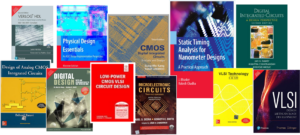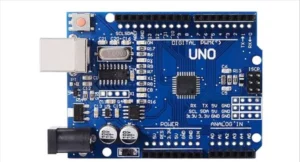Introduction:
A DFM engineer, or Design for Manufacturing engineer, is responsible for ensuring that products are designed in a way that is easy and efficient to manufacture.
They work with product designers and engineers to identify potential manufacturing problems and make recommendations for design changes.
Here are some examples of DFM:
- Designing parts with simple geometries that are easy to machine or mold.
- Using standard components and materials to reduce the number of different parts and materials that need to be sourced.
- Designing parts that are easy to assemble, such as using snap-fit features or self-aligning parts.
- Avoiding features that are difficult to manufacture, such as undercuts or sharp corners.
- Considering the manufacturing environment when designing products, such as the size of the manufacturing machines and the available labor skills.
Every day presents its own set of challenges, but on one fateful morning, a DFM engineer found themselves facing what appeared to be the most formidable obstacle of their career.
The Unsolvable Conundrum:
Meet Alex, a seasoned DFM engineer with a reputation for tackling even the most intricate design puzzles. On this particular day, the challenge at hand was unlike anything Alex had encountered before.
The product in question was a cutting-edge medical device – a compact diagnostic instrument designed to revolutionize point-of-care testing. Its compact form factor and advanced functionality held the promise of saving countless lives, but it was its intricate architecture that had brought Alex’s productivity to a halt.
The Problem Statement:
The heart of the issue lay in a key component of the device – a minuscule sensor array that detected multiple biomarkers simultaneously.
The sensor’s delicate design, high precision requirements, and intricate assembly demanded a level of manufacturing precision that seemed unattainable.
The geometric complexity was pushing the limits of current manufacturing technology, and traditional approaches had proven futile.
Also read: A day in the life of an Embedded system Engineer
The High Stakes:
The stakes of solving this conundrum were sky-high. The medical device represented not only a groundbreaking advancement in healthcare technology but also a significant investment for the company.
Its success hinged on the ability to mass-produce the device at a reasonable cost without compromising its performance. The impending product launch was not just a milestone for the company’s reputation; it had the potential to transform patient care and drive substantial revenue growth.
Failure to overcome this manufacturing challenge could result in missed opportunities, reputational damage, and financial setbacks.
A Stroke of Genius and the Power of Teamwork:
As the day wore on and the clock ticked relentlessly, Alex found themselves in a state of deep contemplation. The weight of the challenge they faced was palpable, and traditional solutions seemed to crumble under the weight of the sensor array’s intricate design.
Frustration mingled with determination, and in a moment of serendipity, their mind drifted back to a design concept from a past project – a concept that had been deemed too unconventional and set aside.
The Unorthodox Design Concept:
The concept in question was a departure from conventional manufacturing norms. It involved using a hybrid approach, combining additive manufacturing with precision machining techniques.
This unorthodox method offered a way to create the intricate sensor geometry while maintaining the high tolerances necessary for accurate biomarker detection.
While initially dismissed as too risky due to its unconventional nature, Alex saw potential where others saw uncertainty.
Solving the Problem:
With renewed energy, Alex sketched out the modified design concept. The additive manufacturing process would be utilized to create the complex microstructures of the sensor array, layer by layer.
This approach allowed for previously unattainable intricacies while reducing material waste. Precision machining would then be employed to refine critical surfaces and ensure the required accuracy.
By integrating these seemingly disparate methods, the unorthodox solution aimed to bridge the gap between design ambition and manufacturability.
Challenges and Doubts:
However, the road to implementing this concept was far from straightforward. The additive manufacturing technology itself was still relatively new in the context of such delicate and intricate components.
Alex faced the challenge of optimizing the process parameters to achieve the desired precision and material properties. Additionally, integrating two different manufacturing techniques posed a risk of misalignment or incompatibility, potentially leading to defects in the final product.
These concerns were significant obstacles that tested Alex’s mettle and resolve.
The Power of Teamwork:
Recognizing the significance of their breakthrough, Alex called for an impromptu meeting with the engineering team.
Presenting the unorthodox concept and outlining the potential benefits, Alex encouraged an open exchange of ideas. Colleagues from various backgrounds and expertise levels offered insights and suggestions, enriching the concept and addressing the challenges.
Through collaborative brainstorming and rigorous discussion, the unorthodox solution evolved into a robust and viable manufacturing process.
The Triumph:
As the final hours of the day dwindled, the hybrid manufacturing approach took shape on paper and in animated conversations.
The engineering team’s collective effort had transformed what once seemed like a daring gamble into a calculated and innovative solution. The additive manufacturing and precision machining combination offered a way to realize the intricate sensor array while adhering to the stringent manufacturing requirements.
Conclusion:
The journey from an unorthodox design concept to a refined manufacturing solution exemplifies the power of ingenuity and teamwork.
Alex’s ability to perceive the potential in unconventional ideas and their determination to push boundaries paved the way for a triumphant breakthrough. Moreover, the collaborative spirit of the engineering team, fueled by the shared commitment to success, turned a risky proposition into a strategic advantage.
This day will be remembered as a testament to the dynamic interplay between individual creativity and collective effort, reaffirming the role of DFM engineers as true catalysts of innovation in the world of manufacturing.




